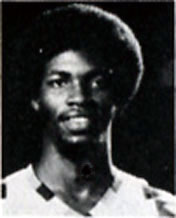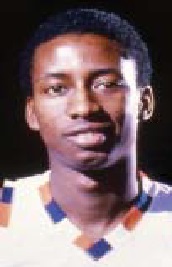How deep is the real depth of Syracuse’s
basketball team in 2011-2012? Two things
validate that it is indeed a very deep squad.
Mookie Jones, a senior who has a lifetime 41% three point shooting
percentage isn’t even part of the ‘second team’ (i.e. the first five bench
players). Freshman Trevor Cooney, who
some have said is the best pure shooter Syracuse has ever had, and surprised
many with all-around game in practice and in the exhibition games is going to
redshirt the year because he would not be in the top 10.
So there is a lot of depth.
Further bolstering the perception of depth is that three of
the bench players easily could replace a current starter on the Syracuse
lineup. C.F. Fair has an excellent all around game and could be one of the starting
forwards, though Rakeem Christmas does offer the bigger body up front. Dion Waiters is probably the most explosive
offensive player on the team, and it is easy seeing him replace either Scoop
Jardine or Brandon Triche. Baye Keita
actually outplayed Fab Melo for most of last season, and played far more
minutes than Melo.
James Southerland, buried deep on the bench, is one of the
team’s top scorers four games into this season, and has one of the sweetest
three point shots on the squad, on top of a very athletic 6’8” frame.
Freshman Michael Carter-Williams is a McDonald’s American,
with tremendous size and reach for a guard (6’5”), and a reputation for a
complete game at guard.
Unlike many other seasons, I expect that Jim Boeheim will
not shorten his bench too much. I think situational play may dictate who plays
in which games, and how many players see action each game. The five ‘reserve’ players all have their
strengths, and also have their weaknesses.
Waiters was a tad bit selfish last year, and was not
committed to the defensive scheme. Fair
had no perimeter shooting. Keita was
very raw on basketball fundamentals, especially on the offensive end of the
court. Southerland was woefully
inconsistent. And Carter-Williams is a freshman with no NCAA experience.
The starting five for Syracuse
has a lot of experience, especially by today’s standards. Brandon Triche is a third year starting guard.
Senior Scoop Jardine is a 2nd year starter who is in this fifth year
in the program. Senior Kris Joseph is a second year starter who has logged
three seasons worth of starting time. Fab Melo has a year under his belt.
Rakeem Christmas is the inexperienced player as a pure freshman, though with a
McDonald’s All American pedigree, that is the best type of freshman to have.
However, Syracuse
has a lot more ‘potential’ this year than ‘actual’ on the court. This year’s team could be great. As fans we can dream about how good each of
these players would be if they reached their potential. Some of the players have shown that they have
improved upon their weaknesses from last year; but we need to see this play out
over several more games.
The starting five for Syracuse
this year is talented, and the bench is very deep. But I don’t think, right
now, there is a starter as talented as the 2008-2009 Andy Rautins, Arinze
Onuaku or Wes Johnson. Nor anyone as talented as the 2009-2010 Rick
Jackson. At least not yet.
And because of that, it makes it easier for Boeheim to go to
his bench. The drop off from the starter talent level to the bench talent level
is not that great. I do not think there
is one starter on the team that would be a devastating loss to the Orange
if an injury were to occur (unlike the loss of Onuaku in 2008-2009 to the
team). A loss of any player hurts a
team, but many can be overcome with other players stepping up and I believe
this year’s team has that ability.
Boeheim has had other deep benches before. The 1977-1978 squad had senior forward Kevin
James on the bench, with sophomore guard Hal Cohen, freshman center Danny
Schayes, and freshmen guards Eddie Moss and Marty Headd.
The 1979-1980 squad, that went 26-4 and won the first Big
East regular season title, may have had the deepest bench in Syracuse’s
history. Senior guard Hal Cohen was on
the bench, along with junior Danny Schayes (who would play in the NBA for 17
seasons), sophomore forward Ron Payton, highly touted freshman forward Tony
Bruin, and junior forward Chris Jerebko.
The 1987-1988 team did not go ten deep, but the first four
off the bench were pretty impressive led by sophomore guard Earl Duncan and
sophomore forward Keith Hughes. Junior
forward Herman Harried and senior Derek Brower rounded out the bench. Both
Duncan and Hughes would transfer to Rutgers and start
for the Scarlet Knights.
The 1992-1993 team had the shot blocking junior Conrad
McRae, the dynamic freshman guard Anthony Harris, the sweet shooting freshman
forward Glenn Sekunda, former starting point guard junior Michael Edwards, and
freshman forward Luke Jackson.
The 1999-2000 team went nine deep, but bear mentioning as
the four off the bench included sophomore swingman Preston Shumpert who scored
in double digits, dynamic freshman guard DaShaun Williams, former starting
point guard junior Allen Griffin, and freshman swingman Kueth Duany.
The 2003-2004 team had five guys who were going to have to
sit and bide their time as the starting five were young and entrenched. That bench included freshmen DeMetris Nichols,
Louis McCroskey, Terrence Roberts and Darryl Watkins, and senior shot blocking
center Jeremy McNeil.
The following year the bench may have been stronger (for a
while) with Nichols, Roberts and Watkins now sophomores (McCroskey was now a
starter), the enigmatic junior Billy Edelin, and freshman guard Josh Wright.
In hindsight, some of these benches do not look as strong
today as they seemed at the time; in some cases they look stronger then they
actually were. That is one of the realities of college basketball, in that you
most separate the expectations from the reality, along with recognize the
opportunity.
I do think we will see a deep bench this year, not because
Jim Boeheim has changed his coaching philosophy, but rather because that is
what the composition of his team dictates.
He has ‘flawed’ players throughout the lineup, and match-ups will
matter. He has a lot of talent on the bench, and the starters are not significantly
better, so the replacement value difference is not too costly.
I think as the season progresses we may find a couple of the
bench players become more significant, especially if their game has truly
improved. If Waiters plays hard on both ends of the court, he would be tough to
keep off the court. Especially if
Jardine starts showing his ‘Scoop moments’ late in the game, or Brandon Triche
gets in a funk. If Rakeem Christmas
struggles, and James Southerland continues to play consistent basketball
sticking his shot, and playing solid zone defense, I would not be surprised to
see him leap over many others to start.
I have no expectations about who will do what in 2011-2012.
I do like the prospect with so many guys with large upsides, that the
competitive factors between the players will drive some to realize their
potential, and some true stars will emerge.





